
Zeitschrift fur Medizinische Physik
Scope & Guideline
Innovating the intersection of medicine and physics.
Introduction
Aims and Scopes
- Radiation Therapy Innovations:
The journal emphasizes research on radiation therapy methods, including risk management, simulation studies, and the development of digital systems for risk assessments, ensuring high standards in patient care. - Artificial Intelligence Applications:
A significant focus is placed on the integration of artificial intelligence and machine learning techniques in medical imaging and treatment planning, such as deep learning for image analysis and automated contouring. - Imaging Techniques and Quality Assurance:
Research on advanced imaging techniques, including MRI, CT, and PET, is prevalent, particularly studies related to image quality, reconstruction methods, and dosimetry. - Monte Carlo Simulations and Dosimetry:
The journal frequently publishes studies utilizing Monte Carlo simulations for dose calculations and risk assessments in various therapeutic contexts, demonstrating the importance of accurate dosimetry in treatment planning. - Clinical Applications of Ultrasound and Photons:
There is a growing interest in the clinical applications of ultrasound technologies and photon-counting detectors, contributing to advancements in diagnostic imaging and therapeutic strategies.
Trending and Emerging
- AI and Deep Learning in Medical Imaging:
There is a marked increase in research centered around the application of AI and deep learning for tasks such as image segmentation, prognosis prediction, and treatment planning, reflecting a transformative trend in medical imaging. - Risk Management Systems in Radiation Therapy:
Emerging studies focus on sophisticated risk management systems that incorporate digital tools and methodologies to enhance safety and efficacy in radiation therapy. - Multimodal Imaging Techniques:
An increasing emphasis on multimodal imaging approaches, combining various imaging technologies for comprehensive diagnostics and treatment monitoring, signifies a trend towards integrated imaging solutions. - Space Radiation Research:
With growing interest in space exploration, studies assessing radiation risks for astronauts and the development of protective measures have become a notable theme, underscoring the intersection of medical physics and aerospace research. - Patient-Specific Treatment Planning:
Research on personalized medicine, including patient-specific dosimetry and treatment planning strategies, is gaining momentum, aiming to optimize therapeutic outcomes tailored to individual patient needs.
Declining or Waning
- Traditional Radiotherapy Techniques:
Research focusing on conventional radiotherapy techniques is less frequent as newer methodologies and technologies, such as adaptive and AI-driven approaches, gain traction. - Basic Physics of Imaging Techniques:
There is a noticeable reduction in studies centered on the fundamental physics of imaging modalities, with more emphasis now on application-based research and technological advancements. - Non-Digital Risk Management Approaches:
Traditional non-digital methodologies for risk management in radiation therapy are being overshadowed by innovative digital solutions and AI-based frameworks.
Similar Journals

Physical and Engineering Sciences in Medicine
Engineering Progress in Biomedical SciencePhysical and Engineering Sciences in Medicine is an esteemed peer-reviewed journal published by SPRINGER, dedicated to advancing the interdisciplinary fields of biomedical engineering and biophysics. With an ISSN of 2662-4729 and an E-ISSN of 2662-4737, this journal has carved a niche for itself since its inception in 2020. Situated in the Netherlands, it serves as a global platform for innovative research and developments that bridge the physical sciences and engineering with medical applications. The journal boasts a commendable range of quartile categorizations, highlighting its impact in various sectors including Instrumentation (Q1), Radiology (Q2), and Biotechnology (Q2). Its Scopus rankings further emphasize its relevance and quality, placing it in the top 15% in several categories. Being an Open Access title, it promotes the dissemination of knowledge, ensuring that vital research is accessible to all, thereby fostering collaboration among researchers, professionals, and students alike. The journal's objectives include promoting cutting-edge research, enhancing biomedical technology, and addressing complex health challenges through innovative engineering solutions, establishing it as a vital resource in the scientific community.
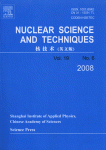
Nuclear Science and Techniques
Pioneering Research for a Sustainable Nuclear FutureNuclear Science and Techniques is a distinguished peer-reviewed journal published by Springer Singapore Pte Ltd, dedicated to advancing the fields of nuclear science and engineering. With an impressive impact factor reflected in its 2023 quartile rankings—Q2 in Nuclear and High Energy Physics and Q1 in Nuclear Energy and Engineering—the journal serves as a vital resource for researchers, professionals, and students alike. Covering a breadth of topics from nuclear physics to energy applications, it offers a platform for innovative research and developments in the nuclear domain. The journal, indexed under ISSN 1001-8042 and E-ISSN 2210-3147, aims to foster scientific exchange and collaboration within the community by publishing high-quality articles that contribute significantly to the field. Committed to maintaining an open-access ethos, it enhances visibility and accessibility of critical knowledge, making it an essential source for current insights and trends in nuclear science.
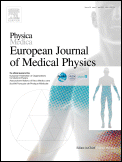
Physica Medica-European Journal of Medical Physics
Innovating Research in Biophysics and ImagingPhysica Medica - European Journal of Medical Physics is a premier peer-reviewed journal published by ELSEVIER SCI LTD, dedicated to advancing the field of medical physics. Established in 1989 and serving as a critical platform for innovative research, this journal covers a broad spectrum of topics within biophysics, radiology, and imaging sciences, consistently ranked in the Q1 category across these disciplines. With an impressive impact factor that highlights its influence within the scientific community—ranking 52/333 in Radiology, 42/243 in Physics and Astronomy, and 35/152 in Biochemistry—the journal is a valuable resource for professionals, researchers, and students aiming to contribute to the technological and methodological advancements in medical physics. Physica Medica is committed to fostering open dialogue and collaboration within the global medical physics community, although it currently does not offer open access options. The journal's extensive citation history and ongoing relevance underscore its importance in the continuous evolution of medical science.
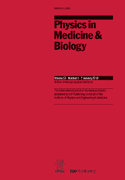
PHYSICS IN MEDICINE AND BIOLOGY
Pioneering Research for Tomorrow's Medical TechnologiesPHYSICS IN MEDICINE AND BIOLOGY is a prestigious journal published by IOP Publishing Ltd, with a storied history dating back to 1956 and extending through 2024. This internationally recognized journal caters to the interdisciplinary fields of medical physics and bioengineering, making significant contributions to the research and development of advanced diagnostic and therapeutic technologies. It holds an impressive Q1 ranking in both Radiological and Ultrasound Technology and Radiology, Nuclear Medicine and Imaging categories, reflecting its critical role in disseminating high-quality research. With a significant focus on merging the principles of physics with advancements in medicine, PHYSICS IN MEDICINE AND BIOLOGY serves as an essential resource for researchers, professionals, and students alike, fostering innovation and enhancing collaboration in the healthcare sector. Although the journal is not currently open access, it maintains robust participation in the Scopus database, ranking #62 out of 333 in Radiology, Nuclear Medicine and Imaging and #17 out of 63 in Radiological and Ultrasound Technology, signifying its influence and reach within these disciplines.
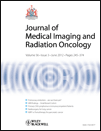
Journal of Medical Imaging and Radiation Oncology
Advancing the Frontiers of Medical Imaging and OncologyJournal of Medical Imaging and Radiation Oncology, published by WILEY, is a pivotal resource in the fields of oncology and medical imaging. With an impact factor reflective of its commitment to advancing research, the journal has maintained a robust reputation since its inception in 2008 and continues to thrive through 2024. It is indexed with an insightful ranking, with a Q2 classification in Radiology, Nuclear Medicine and Imaging, affirming its importance in these disciplines. This journal not only serves as an open access platform, allowing extensive reach and accessibility, but also fosters a scholarly community dedicated to the innovation of imaging techniques and radiation oncology practices. As a key player in disseminating crucial findings and advancements, it appeals to researchers, clinicians, and students who aim to contribute to the evolving landscape of medical imaging and cancer treatment methodologies. The journal is based in Australia, at 111 River St, Hoboken, NJ, and invites submissions that push the boundaries of current knowledge in this critical area of healthcare.
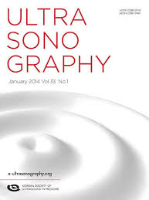
Ultrasonography
Shaping the Landscape of Ultrasound MedicineUltrasonography is a prominent open-access journal published by the Korean Society of Ultrasound Medicine, dedicated to advancing the field of medical imaging and ultrasound technology. Since its inception in 2013, the journal has provided a platform for high-quality research, review articles, and advancements in ultrasonography, filling vital knowledge gaps in the radiology, nuclear medicine, and imaging sectors. With an impressive Q2 rank in its category for 2023 and a placement in the 71st percentile according to Scopus metrics, Ultrasonography serves as a crucial resource for researchers, practitioners, and students alike. Based in South Korea, it continues to attract a global audience by offering valuable insights into the latest techniques, technologies, and applications of ultrasound in clinical practice and diagnostics. Academics can access this comprehensive journal freely, fostering greater dissemination of knowledge in the ultrasound community.
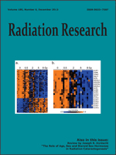
RADIATION RESEARCH
Bridging fundamental insights with applied radiation research.RADIATION RESEARCH is a prestigious journal published by the RADIATION RESEARCH SOC that serves as a vital resource for professionals and researchers in the fields of biophysics, radiation science, and radiology. Established in 1954, this journal has consistently advanced the study of radiation's effects on health and the environment, bridging fundamental and applied research. It boasts an impressive impact factor reflected in its quartile rankings, including Q2 in Biophysics and Q1 in Radiation, making it a highly regarded publication within its discipline. Researchers will find valuable insights through rigorous peer-reviewed articles that explore innovative methodologies and findings related to radiation exposure, imaging technologies, and the biological consequences of radiation. Although the journal does not currently offer open access, it remains a vital reference for academia and industry, fostering a deeper understanding of radiation sciences and their implications for future research and public health.

Advances in Radiation Oncology
Elevating Standards in Cancer Care ResearchAdvances in Radiation Oncology, published by Elsevier Inc, is a premier international journal dedicated to the field of oncology and radiology, focusing on the latest groundbreaking research and innovations in radiation therapy. Launched as an Open Access journal in 2016, it has since carved out a significant niche in the academic community, featuring contributions that span a diverse range of topics including clinical practices, technologies, and outcomes in radiation oncology. With an impressive Q2 rankingOncology and Radiology, Nuclear Medicine and Imaging categories for 2023, and positioned within the 65th and 55th percentiles of Scopus ranks, it serves as an essential resource for researchers, medical professionals, and students alike. The journal not only emphasizes the importance of disseminating knowledge widely through its open access model but also aims to foster collaboration and innovation in the evolving landscape of cancer treatment. For those looking to stay at the forefront of radiotherapy research and advancements, Advances in Radiation Oncology is an invaluable platform for scholarly communication.
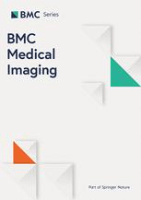
BMC MEDICAL IMAGING
Advancing the Future of Radiology and Imaging Technologies.BMC Medical Imaging is a premier open-access journal dedicated to advancing the field of radiology, nuclear medicine, and imaging technologies. Published by BMC in the United Kingdom, this journal serves as a vital resource for researchers, clinicians, and students, fostering a collaborative environment for sharing innovative findings and methodologies in medical imaging. With a commendable impact factor and an impressive Scopus ranking within the top 35% of its category, BMC Medical Imaging provides a platform for high-quality research to be disseminated widely and freely since its inception in 2001. The journal aims to cover a diverse array of topics, from advanced imaging techniques to their clinical applications, enhancing the understanding and effectiveness of diagnostic practices. By contributing to the body of knowledge and facilitating open access to research, BMC Medical Imaging plays a pivotal role in shaping the future of medical imaging and improving patient care.

Journal of Medical Imaging and Radiation Sciences
Innovating insights for a brighter healthcare future.Journal of Medical Imaging and Radiation Sciences, published by Elsevier Science Inc, is a prominent platform dedicated to advancing research and knowledge in the field of medical imaging and radiation sciences. With an ISSN of 1939-8654, this journal plays a crucial role in disseminating innovative studies and insights from 2008 to 2024, providing a valuable resource for researchers, professionals, and students alike. It is positioned within the Q3 quartile in both the categories of Radiological and Ultrasound Technology and Radiology, Nuclear Medicine and Imaging, indicating its growing influence and contributions to these critical areas of healthcare. While it currently does not offer open access, authors benefit from the journal's rigorous peer-review process, ensuring high-quality publications. As the landscape of medical imaging continues to evolve, the Journal of Medical Imaging and Radiation Sciences stands out for its commitment to education and innovation, inviting contributions that explore the latest technological advancements and clinical applications.